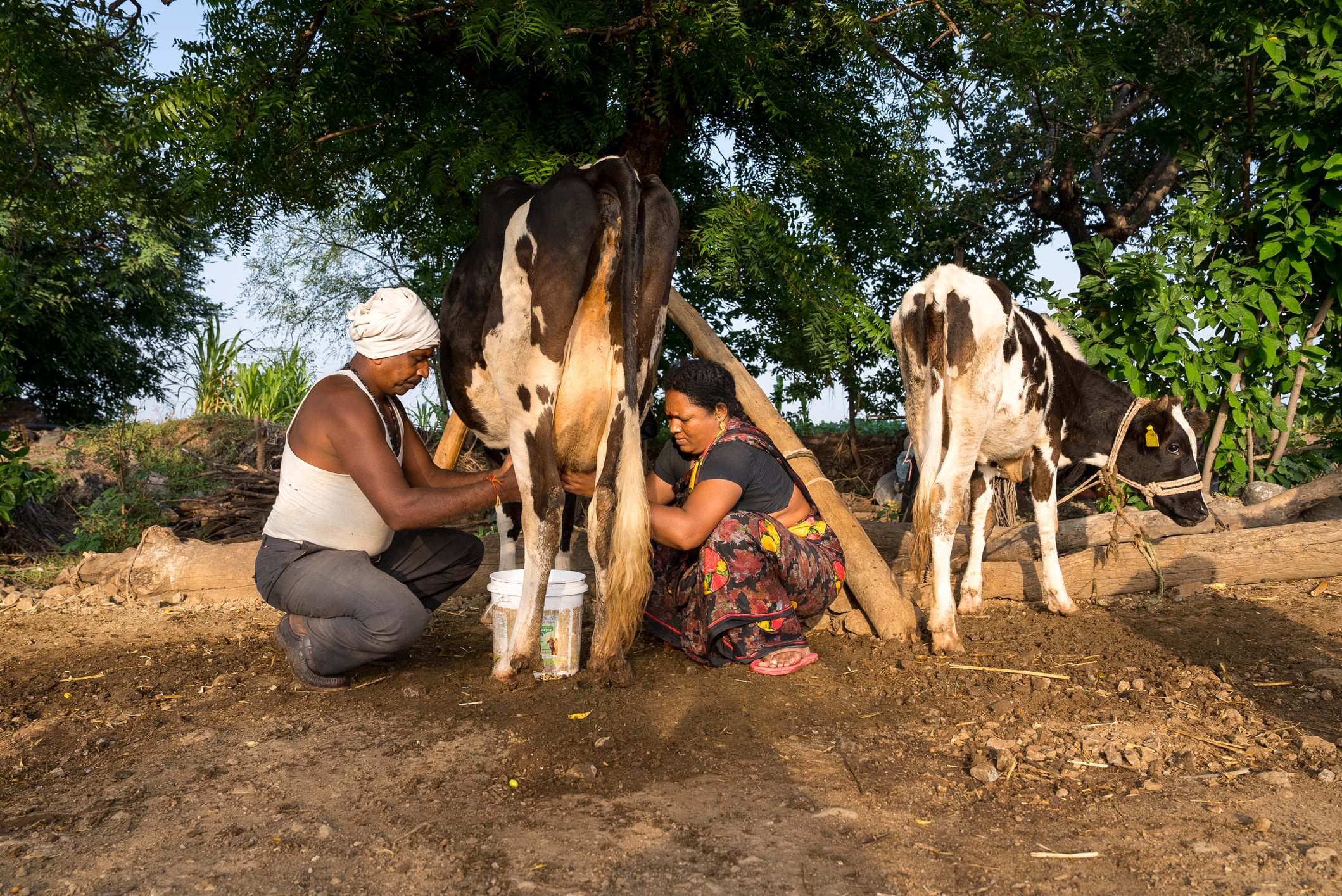According to the Organisation for Economic Co-operation and Development (OECD), the amount of greenhouse gas emissions from dairy at a global scale would largely depend on efficiency gains in India.
India is the world’s largest dairy-producing country and one of the top 5 global emitters of methane (along with China, the US, Russia and Brazil).
The country’s distinct model of dairying – which is dominated by smallholder farmers with low productivity – means milk production in India is highly carbon-intensive. The average milk yield per cow is only 1,700 kg per year in India, which is just 16% of North America’s and 25% of Europe’s.
ING Bank research estimates that 1.73kg of CO2e emissions go into producing a kilo of fat and protein-corrected milk in India; versus 0.74kg of CO2e in New Zealand and 0.96kg of CO2e in the US.
Low productivity means more animals are needed to meet demand, which increases total GHG emissions from enteric fermentation, manure management, and feed production.
Knowledge is power
And it’s not just about economies of scale: a lack of farmer awareness about the benefits of productivity gains is among the chief reasons why India has struggled to move the needle.
According to research, access to information alone can lead to dairy productivity gains of 15%.
A study authored by Pratap S. Birthal and others (see ‘sources’ below for more information) highlights that only 25% of livestock farmers have access to any information on livestock production; just 14% receive information from public extension systems, such as the Ministry of Agriculture; and farmers often rely on private sources or input suppliers, which may provide low-quality or biased information.
Public extension systems have the highest impact on productivity: yet, spending on such forms only 2% of India’s total livestock sector expenditure.
The more educated farmers are, the better their farm’s productivity.
Combining three or more types of information can boost productivity by more than four times.
This means that there is a need for public sector strategy to empower farmers with the information they need: and the good news is that even small increases in spending on the areas highlighted above can lead to measurable gains in productivity.
In the long run, investing in education - beyond information-sharing - will be crucial to fostering a more efficient dairy production system.
According to research, higher education levels correlate with better productivity: specifically, farmers with secondary education or above see significantly higher milk yields.
Supporting farmers in the transition economically is also crucial for governments and the private sector. While smallholder farmers are vital to India’s ag economy, they remain extremely economically fragile.

Low milk yield limits farm profitability; the use of informal markets, through which over 80% of milk is traded, impacts price stability and transparency for producers; and lack of technological advancements hampers farm efficiency efforts and limits environmental sustainability.
Overall, a holistic approach is needed to address India’s productivity gap: and help curb emissions from dairy and livestock farming.
Improving breeding programs and identifying genetic markers linked to lower methane emissions could help move the needle; as would improved nutrition and feed strategies and expanded access to India’s circa 80,000 veterinarians.
At a policy level, more can be done to promote sustainable farming, whether through market reforms or targeted support for smallholders.
Cornell’s bovine feed library
One notable project that can help improve India’s smallholder dairy sustainability is led by the US Cornell University.
Researchers are currently working on collating a library of information on feed ingredients to help Indian farmers formulate diets for their animals that lower enteric methane production. They have found 350 different feed ingredients used across the country and aim to collect 15 to 20 replicates of each.
A total of 5,000 to 7,000 samples will be collected, with a focus on those that are commonly fed by smallholder farmers, such as oats, maize or barley.
The goal is to set up a feed library to be used for integration into different ration-balancing software capable of recommending balanced feeds to improve the efficiency of dairy animals.
Sources:
Investigating the impact of information on the efficiency of smallholder dairy production systems in India and the lessons for livestock extension policy. Pratap S Birthal, Jaweriah Hazrana, and Raka Saxena. Agricultural Economics Research Review 2022, 35 (2), 27-42. DOI: 10.5958/0974-0279.2022.00029.5
Shekhar R, Chandra. (2025). A Comparative Analysis of Dairy Farming Practices and Sustainability in India and Key Global Markets. International Journal For Multidisciplinary Research. 6. 1.




